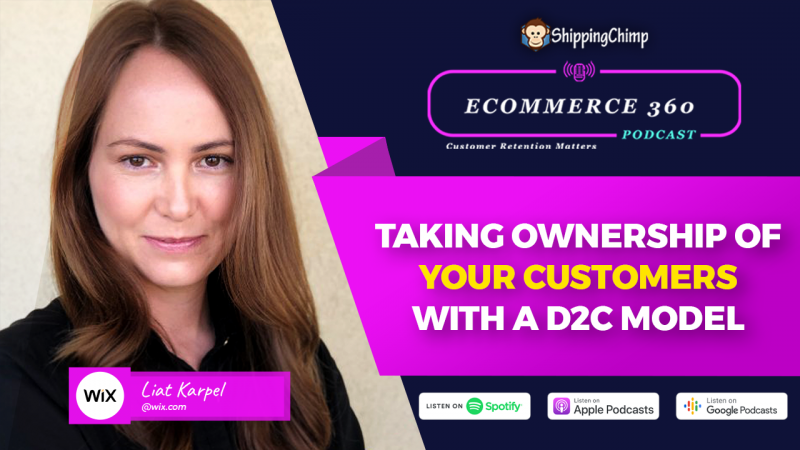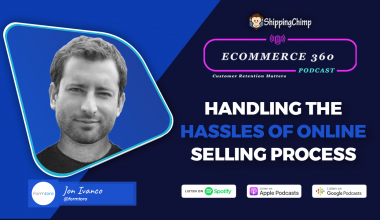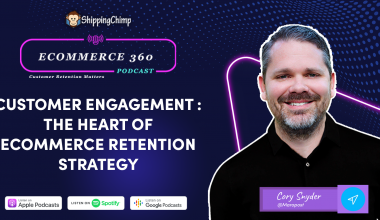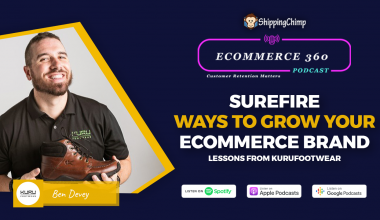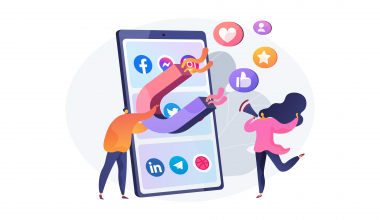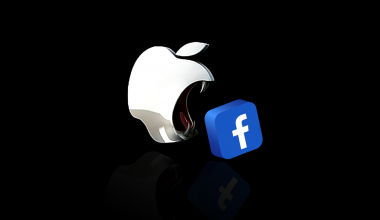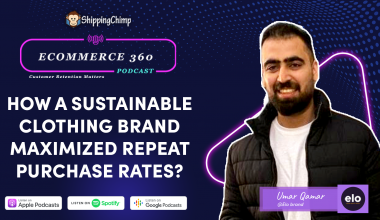For any eCommerce business, your customer is your greatest asset. You invest in acquiring every new customer – time, resources, and budget. But the real reward is not just closing the sale, it’s your potential to continue earning from that customer for a lifetime.
In this episode we speak about some of the most effective ways to keep customers coming back, including building a subscriber list, automating upsell and reminders with email marketing, and building loyalty programs.
Here are the topics that we discuss:
- How can eCommerce businesses find the right balance between acquisition and retention strategies?
- What are the surefire strategies to keep customers coming back to your website, as an eCommerce store?
- How important do you think the role of close purchase communication by crafting an effective retention strategy for eCommerce businesses?
- What metrics do you think, are indicators of a strong customer retention strategy?
- How important is customer engagement for eCommerce?
- What is the trend that will pave the way to a new retail future for e-commerce?
Revathi: Hey folks, welcome to e-commerce 360 Today we have Liat Carpel, who heads e-commerce marketing at wix.com. Wix eCommerce platform which powers more than 700,000 eCommerce stores online worldwide. Hey, Liat how are you doing today?
Liat: Hi, I’m doing well. Thank you. Thanks for having me on.
Revathi: We are super excited to have you on our show. Would you like to start by telling us a bit about yourself and about your journey with Wix?
Liat: Sure. So, I’m Liat. I lead ecommerce marketing at Wix. I’ve been at Wix about seven years now. I am always with the marketing team, and I’ve been leading the e commerce group for about two years now. And so, we’ve grown over the years, and our focus on different audiences has grown. So, that’s me. And prior to Wix, I’ve always worked in marketing for technology companies and technology brands. So, kind of evolved up to the point that I joined Wix.
Revathi: That’s wonderful. So today, folks, we are going to be talking about taking ownership of your customers with a D2C model. So, let’s get started on the topic of Liat. Acquisition versus retention, right? The age-old war in e-commerce,
How can eCommerce businesses find the right balance between acquisition and retention strategies?
Liat: Sure. So, I think, first of all, I’ll start by just giving the caveat that it really depends on your business, because obviously, depending on what exactly you’re Senax setting and the kind of product that you have, or products that you have, that could look a little different.
There are instances where you have a product that’s more of a one-time kind of purchase, or limited purchase. So, let’s say things like maybe, if you’re selling engagement rings, you probably not expecting your customer to come back too often, to buy another one. And then there are other products that have a much shorter lifespan and that you need many options. So, if we’re talking about things, like skincare products, or beauty products, those are things that you know, somebody buys, and then finishes pretty quickly and needs to replenish. So it does really depend on what kind of products you’re selling.
But in the general sense, I would say that, in the long term, you know, your customer is your greatest asset. And we all invest so much in acquiring customers. And it takes a lot, it takes marketing, budget, it takes time, it takes resources. So, ultimately, you want to make sure that you’re not just closing the sale. Which of course is always a great thing for an e-commerce business. But you also want to make sure that you have the potential to continue earning from that customer for a lifetime. And when we’re talking about return customers, you know, once a customer has already engaged with your brand and bought from you once you’ve already passed a lot of the hurdles with them. You know, they like your brand, they probably like your product. So, it’s going to be easier to try and get them to make that second purchase. But again, if you’re using the right strategies for doing that.
So, I mean, I would say when I talk about retention, versus like acquisition versus retention. I think that you have to think about things like customer lifetime value. Because, you know, obviously, you’re going to be as an e-commerce business, looking at so many different metrics, whether it’s visitors bounce rates, click-through rates, you know, average order value, add to cart ratio, so many important KPIs. But they all focus on really short-term goals. And I think that you need to think about something that’s going to give you a longer-term vision. So that’s what we’re going to touch on lifetime value.
And here, I say like that’s going to end up giving you this North Star for how you’re able to grow your profits because ultimately increasing lifetime value is increasing your profits. It’s going to give you an accurate gauge on what customers are worth to your business. And then it’s going to allow you to structure marketing investments so that you’re maximizing profit margins. And you know, even get down to granular stuff like how you’re maximizing bids for paid ad platforms.
But when you’re thinking about lifetime value, you’re actually taking both of those pieces into account. Both the acquisition piece and the retention piece. And, I think that you know, when you’re thinking about lifetime value, the cost of acquisition of bringing a new customer is often higher than what they’re actually going to spend in their first purchase revenue. So if you’re not thinking about your lifetime value, and really understanding that you might only start making money from a customer from their second or third purchase, you might decide to drop a really great customer lead source, or not invest in a certain area of acquisition.
But it also really emphasizes the business case of having a good retention system in place, because otherwise, you’re just throwing money down the drain. What I will say is, if you’re going the route of a lifetime value, and ROI model, there are challenges here. First of all, even say, at Wix ourselves, we don’t actually plan or measure our marketing investment based on lifetime value. But we are an online SAS platform with 200 million customers around the world. So, we have a really different business. And that’s a different talk for another day. But I do say you have to understand that customer acquisition costs and conversion rates change with time, and they’re not constant. retention rates change with time, and they’re not constant.
So if you’re going into using a lifetime value model, what you need to think about is short term versus long term. So you want to think short term, so that you’re bringing relevant shoppers covering your acquisition costs, returning your marketing investment as quickly as possible. So, you’re able to reinvest that money, and hopefully bring more customers. And then you think about the long term, how are you growing long term customer value in revenues, so that you’re ultimately building your business and optimizing and increasing profitability. So, we say short term, look at very short, cohort-based customer value and ROI models, so that you’re able to think about the tactical and immediate investments and look at the longer-term models so that you’re understanding growth tracks for your business.
Revathi: That’s one wonderfully said. So short term versus long term. That’s how you solve the problem between acquisition and retention. So, when we talk about retention.
What do you think are the surefire strategies to keep customers coming back to your website, as an eCommerce store?
Liat: Sure. So, I think whenever you’re thinking about how you get customers to come back, and maybe even just spend more or buy again, you want to be thinking about how you’re actually providing value. Okay, throughout that customer journey, no matter what tactic you’re doing. Because, and we’ll talk about some of those and what can really work. But make sure that you’re basing whatever you’re offering your customer on what they really need and want. And not just being, you know, salesy and pestering them, because that’s going to have the opposite effect on what you actually want from them.
So, some of the things that you want to think about when you’re getting into this thing is, first of all, of course, your upsell and cross-sell tactics that you’re using. And basically, this is just you suggesting either additional products to your customers if you’re doing a cross sale, so that they’re buying more than one product. Or suggesting more expensive products if you want to do an upsell. But this kind of thing can really increase how much customers spend.
So, like, I’ll tell you a step from the Wix network. If we’re talking about even something as basic as adding related items onto product pages. So, stores that do that see 43% more sales transactions than stores that don’t. So obviously, in terms of a retention strategy, you want to think about how you’re using other channels to make these upsell and cross-sell offers. So, you’re going to want to think about things like email marketing, and other ways that you reengage your customers. And if you’re doing that, make sure again, that it’s a relevant offer, like I’ll say, with emails, let’s say your customer just bought a beautiful jacket from your store.
If you send them an email, offering them another beautiful jacket. They’re probably not going to want to buy it today because they just got one. And if you send them an email, giving them 50% off the jacket they just bought from you, they’re probably going to be really mad at you and mad at themselves that they bought the jacket in the first place. So, that’s not a great route for going about it. But if you’re basing it based on their purchase history on what buyers similar to them have bought.
So, you’re digging back into your data. And then you’re selling them products, that you know that customers who bought this jacket also bought or really love. So, maybe a great shirt or tie to go along with that jacket, that’s a great way to get them to come back. And I think as you’re implementing these upsells, and cross-sells, you really want to think about how you do that in an automated way.
So, there are a lot of automations that you can set up for your store so that they’re doing this work for you. You know, obviously, the most popular one would be abandoned cart recovery. This is like a basic for any store. I always tell every business you have to set this up. This is just throwing money down the drain, if you don’t add this to your online store, and here, I can tell you that our stores that do have active abandoned cart recovery, they increase sales up to 29%. And that’s a one-time setup, right that you do for your store. And then this automation works for you forever. But there are a lot of other automations you can do. Right. You can think about what happens to new members and subscribers. Are you going to send them something specific, do you want to offer them a coupon? You can think about x-days after purchase.
So, if we’re going back to that, like beauty products example from the beginning, if you know that your cream runs out after 30 days, so make sure you’re reminding your customer a few days before that, that they should get ready to buy their next cream. Maybe offer them a discount. So, they’re buying the cream from you and not from somewhere else. And so, you know, you just want to be thinking about what your user journey looks like, what provides value to your customers, and then how you’re consistently doing things that help to re-engage them.
Revathi: There’s a lot of unpacking in that. But you mentioned about the user journey, right? I was reminded that you know, from the time a customer lands on an e-commerce store’s website till the time the checkout, there are so many touchpoints. And then once the order is shipped out, there is absolute radio silence from the merchant’s end.
How important do you think the role of close purchase communication by crafting an effective retention strategy for eCommerce businesses?
Liat: Sure. Absolutely. So, you know, I say this a lot to customer, to our, sorry, to our users about their customers at the beginning of the journey. And I’m like, you know, you might have the absolute best product in the world. And there might be a group of people who really need and want this product. But if you don’t get them to know about your store about your brand, nobody will buy from you, no matter how amazing any of these things will be. And the same is true with customer retention. You know, you want to make sure that your brand is staying top of mind for your customers. But you want to do it in a way that is pleasant to them. Right.
So, you know, I’m going to go with a different example here. Let’s say I’m a candle store, and you bought a candle from me today. I don’t want to pester you all the time with offers on more and more candles that you don’t necessarily need or want yet. But I can think about other content that provides value to you that I can provide. So maybe I have an amazing lifestyle blog, maybe I’m creating other content that’s interesting for you. So, you still have opportunities to engage with my brand along the way. And then when it’s relevant for me to send you another offer you already think or know, are familiar with my brand. Remember, I need to send you those reminders for additional purchases and offers. And I also love it when brands think about creating things like loyalty programs. And a loyalty program is a really great way that you can give value to your customers that’s not necessarily based on sales. So maybe I’ll send you an email and I’ll say, hey, if you follow me on Facebook, I’ll give you some points for the next time you want to buy something from my store, or you know, if you share this or engage with my network in some way. And then you’re helping to build that network and that community, you’re getting more exposure for your brand. And you’re giving your customer value.
They’re like, okay, great, I’ll do this for you. But I’m getting points. So, my next purchase. I’m going to get a better price or get some value. So, I think about thinking about how you build that relationship over time and what touchpoints you want to have with the customer that is not just based on you selling to them. And I’ll tell you that, you know, based on data from our we have a loyalty app in the Wix App Market called Smile.io. And there we see that stores with loyalty programs had their customers spending five times more than average customers. So, investing in loyal customers in the long run really is great for a business. But you need to think about, you know, how you’re creating that engagement over time, and building a relationship with your customer.
Revathi: So, a lot of interesting nuggets there, what you need to say is not every post purchase touchpoint needs to be salesy, it could be educational, it could be, informational, it could be a towards community building. So that’s very interesting. So, we talked about customer lifetime, value earlier, right?
What metrics do you think, are indicators of a strong customer retention strategy?
Because we know customer lifetime value is a huge metric. it’s a great metric to attract. But other than the customer lifetime value, would you say anything else as an indicator of your customer retention strategy going with?
Liat: Absolutely. So, the two really important ones that I think you want to be impacting all the time are repeat sales. So, what is that repeat purchase rate? How often are you managing to get customers to come back and buy again. Also, time to second or third purchase. And again, depending on what product you have in what you’re selling. But I think those are the things that you want to see improving, you want to see if you’re implementing retention strategies, that customers are actually coming back and buying from you again. Because if they’re not, then you’re probably not doing it well, and you should work a little more on what’s happening there.
But you want to make sure that they’re actually coming back and buying. So, it’s simply that the repeat purchase rate. And then once you have that down. I think you want to work on cutting down the time that it takes you to get there as much as possible. And that’s going to take you back then to your acquisition strategy.
Because the sooner that you’re getting customers to those additional purchases, and you’re covering the cost of bringing them completely to your business, you now have that budget available to you again, to go and reinvest and bring more customers.
So, ultimately, those would be like the highest-level metrics that I look at. But I think that whatever activity you’re doing, you also need to have the tactical metrics that you’re looking at for that specific activity. So, for example, if I’m sending out an email, asking you to join my loyalty program, then, in that case, I just want to see how many people are reading the email, how many people are clicking on the email, how many people are joining the loyalty program? So, you know, I think it’s important to have the high-level metrics that you’re trying to move over time.
But also make sure that whatever activity you’re doing, you’re always defining, what does success look like for this? Right? What is the metric that I’m going to use to measure success on this one?
Revathi: Okay, that’s great. So, day-to-day campaign to campaign measure the metrics so that the larger picture and looks good.
How important is customer engagement for eCommerce?
Liat: So, I think that part of the reason that people are speaking about it so much more now, is because so many more businesses have moved online. And so many more people are shopping online.
So, I think customer expectations are changing, you know, the last year has brought about the explosive growth in e-commerce. And you know, with all of the changes of the pandemic, and people shifting the way that they sell, and shop online. We’ve seen so many more businesses starting to sell online, so many more people starting to shop online, I can say just for Wix alone last year in 2020, our merchants processed $5.4 billion in transactions, that was 140% year over year growth in sales transactions.
So, that kind of growth is I think, what’s driving this. Bear in mind that consumers now have different expectations of the brand. It’s not just that business has shifted online, people are spending more time online and engaging more and more with businesses and brands. And they expect you to treat them the way they expected you to treat them in an offline setting as well. So, they expect better customer service, they expect you to engage with them, they expect you to work hard for them to spend their money with you in your store. So, part of it is just customer expectations and where the market is.
And the other part is that I think more and more businesses are having to think about how they implement e-commerce strategies and retention strategies. So, for sure, I can say that in the past for me, typically I used to speak about retention when I was talking about D2C and e-commerce businesses that were based on a D2C model direct to consumer, who were, you know, building out that specific kind of business. And what I can say is in the last year, we’ve seen so many more businesses, adopting D2C tactics for how they’re building out their e-commerce strategy, even if they’re not a pure D2C model.
Because businesses are understanding the value in what it means to cut out the middleman, take ownership over your relationship with your customer, and speak directly to the customer. And also, the value that they have in that first-party data. Because the more you’re selling to your customers online, you know, on a platform that allows you to track your sales data and dive into that data and analytics, the more you understand how to better serve your customers. What do they like? When do they like it? When should you reach out to them? When should you sell again? And so, you know, I think it’s the market moving at a different pace. So I don’t think it’s going to go away, I imagine that it will keep evolving and that the expectations on both sides, will keep evolving. But I’m I think it’s a great thing for e-commerce that businesses are at the point that they understand that retention is a critical part of what e-commerce strategy looks like.
Revathi: That’s wonderfully said. So, what you’re saying as customers, expect the brands to earn their attention, not just show some products that’s on discounts.
As a concluding question, what do you think is the trend that you predict will be you know, pave the way to a new retail future for e-commerce?
Liat: You know, I think that the challenge for a lot of businesses over certainly the next couple of years, as we transition post this huge growth, and you know, the world and life looking different these days, is going to be for businesses to figure out how they integrate all their different sales channels, and also how they integrate online and offline channels.
So, you know, I think that businesses are having to think about all of the different channels that they’re using online, and whether they want to implement marketplaces or social media as additional sales channels alongside their e-commerce business.
And I think they’re having to think about if I also have a brick-and-mortar business, then how am I managing that alongside the e-commerce. And ultimately, what you need is a platform that’s going to allow you to track inventory, orders, sales, data, analytics, cross all of those channels in a way that allows you to make smart business decisions.
So, I think is that, figuring out how you integrate all these pieces, how you manage them together. And then what is the right mix for your business.
Revathi: That’s wonderful. So, integrating the different concepts for e-commerce to drive massive growth. That’s fantastic. Thank you so much Liat for getting on the show and giving us lots of interesting insights for ecommerce brands to unpack. Thank you so much.
Liat: Thank you so much for having me.
